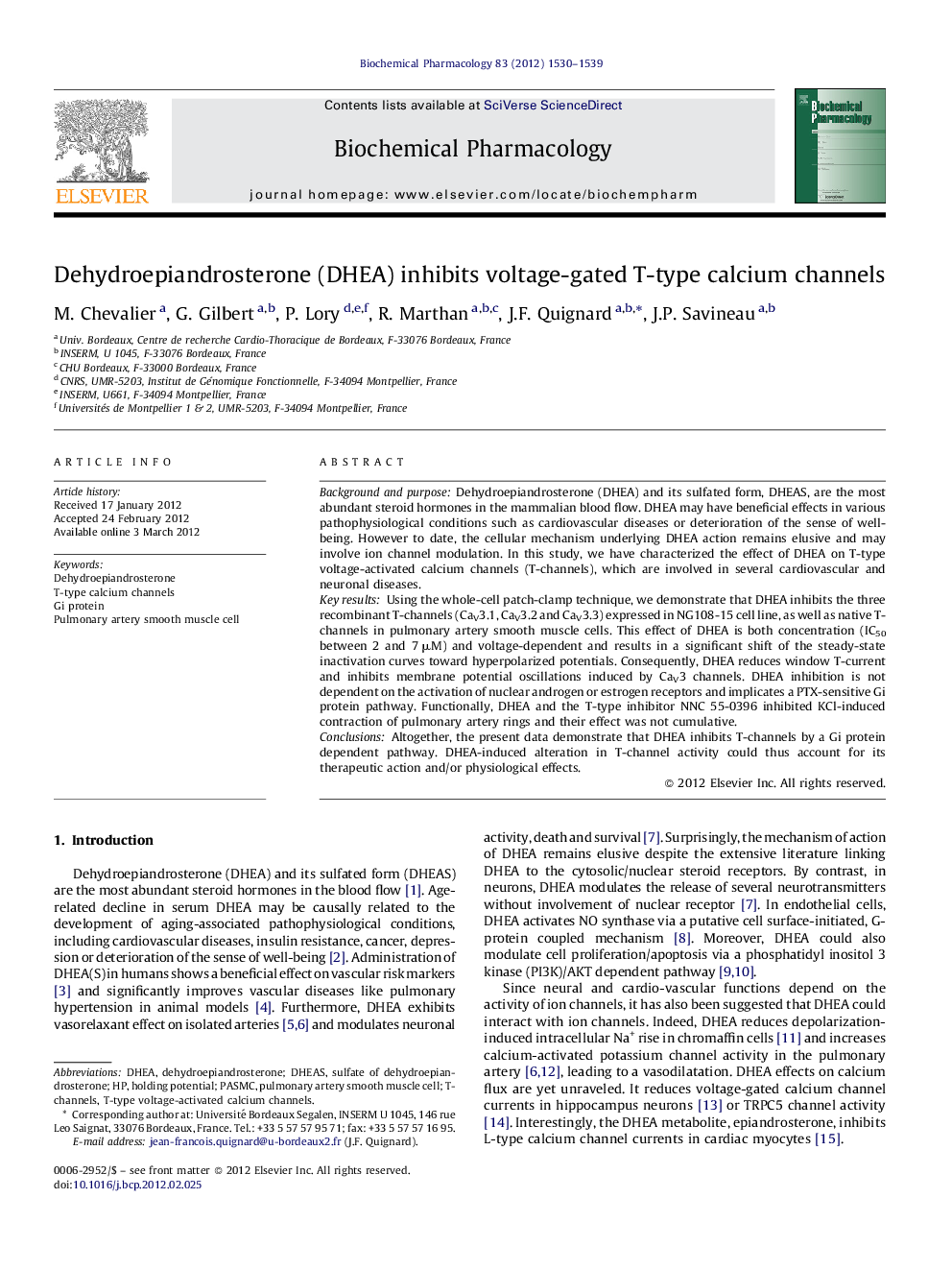| کد مقاله | کد نشریه | سال انتشار | مقاله انگلیسی | نسخه تمام متن |
|---|---|---|---|---|
| 2513378 | 1118410 | 2012 | 10 صفحه PDF | دانلود رایگان |

Background and purposeDehydroepiandrosterone (DHEA) and its sulfated form, DHEAS, are the most abundant steroid hormones in the mammalian blood flow. DHEA may have beneficial effects in various pathophysiological conditions such as cardiovascular diseases or deterioration of the sense of well-being. However to date, the cellular mechanism underlying DHEA action remains elusive and may involve ion channel modulation. In this study, we have characterized the effect of DHEA on T-type voltage-activated calcium channels (T-channels), which are involved in several cardiovascular and neuronal diseases.Key resultsUsing the whole-cell patch-clamp technique, we demonstrate that DHEA inhibits the three recombinant T-channels (CaV3.1, CaV3.2 and CaV3.3) expressed in NG108-15 cell line, as well as native T-channels in pulmonary artery smooth muscle cells. This effect of DHEA is both concentration (IC50 between 2 and 7 μM) and voltage-dependent and results in a significant shift of the steady-state inactivation curves toward hyperpolarized potentials. Consequently, DHEA reduces window T-current and inhibits membrane potential oscillations induced by CaV3 channels. DHEA inhibition is not dependent on the activation of nuclear androgen or estrogen receptors and implicates a PTX-sensitive Gi protein pathway. Functionally, DHEA and the T-type inhibitor NNC 55-0396 inhibited KCl-induced contraction of pulmonary artery rings and their effect was not cumulative.ConclusionsAltogether, the present data demonstrate that DHEA inhibits T-channels by a Gi protein dependent pathway. DHEA-induced alteration in T-channel activity could thus account for its therapeutic action and/or physiological effects.
Extracellular DHEA inhibits T-channels by a Gi protein dependent pathway. This effect accounts for DHEA inhibition of pulmonary artery contraction and thus accounts for its therapeutic action and/or physiological effects.Figure optionsDownload as PowerPoint slide
Journal: Biochemical Pharmacology - Volume 83, Issue 11, 1 June 2012, Pages 1530–1539